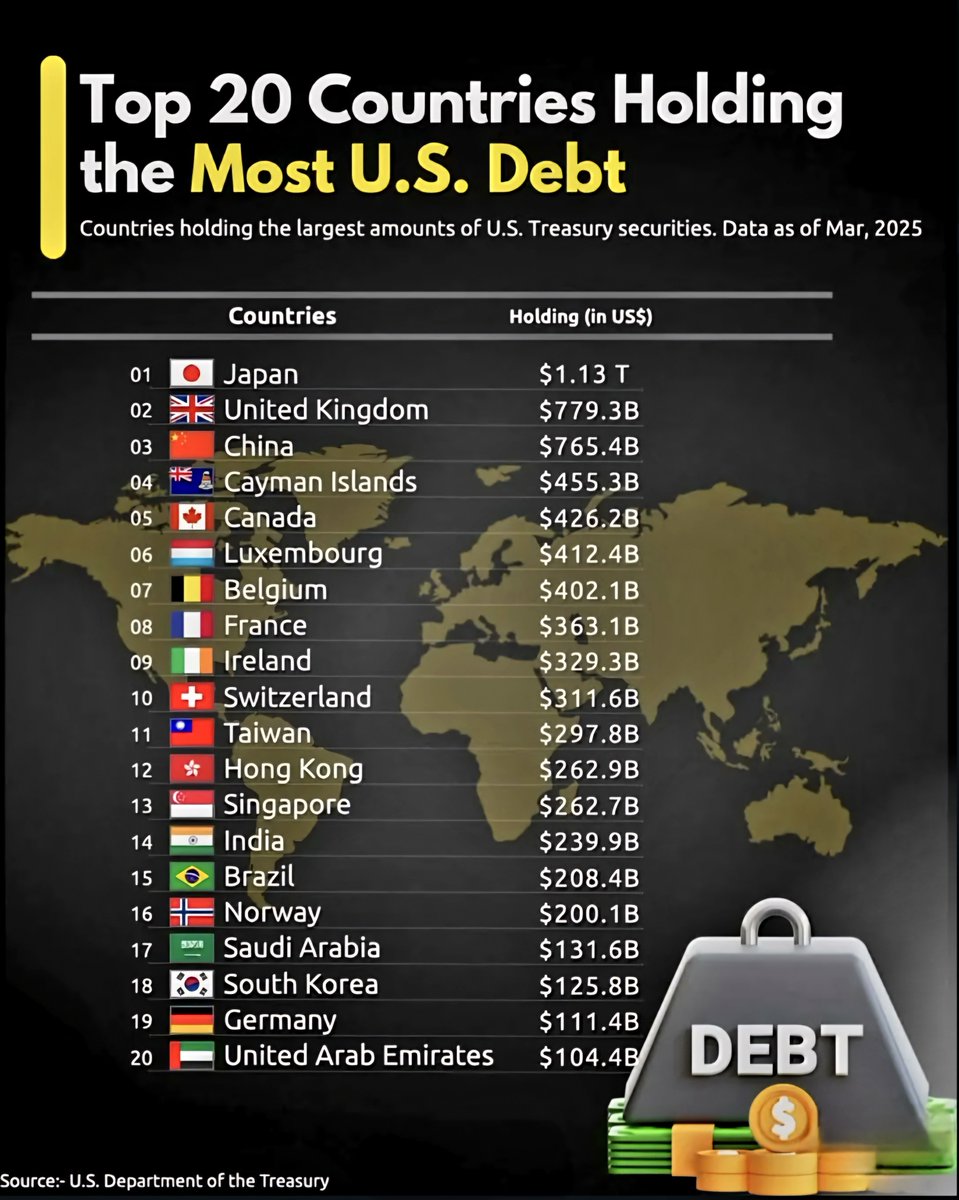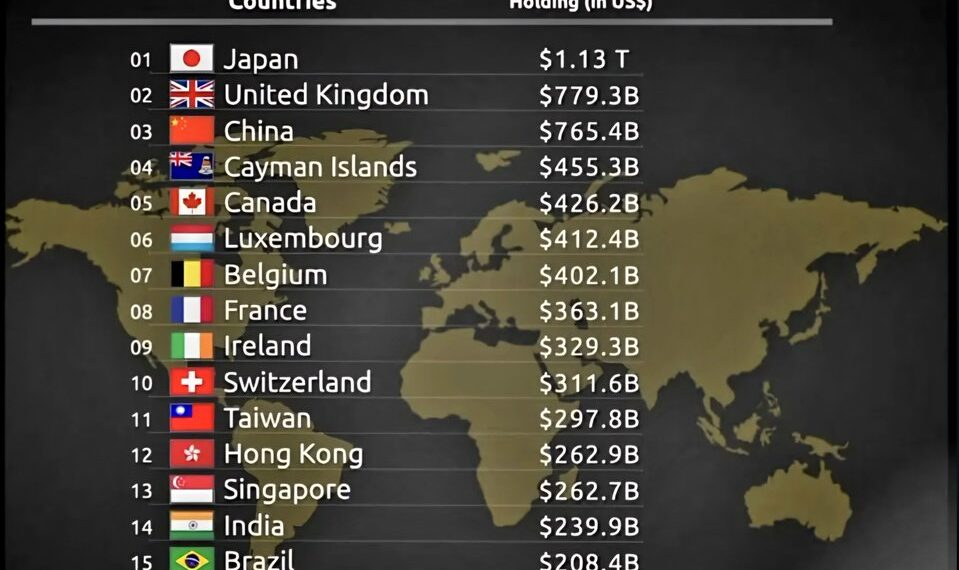Select Language:

Top 20 Countries Holding the Most Debt to the United States in 2025
As of March 2025, nations and territories around the globe continue to support U.S. economic stability by holding significant amounts of American debt. This list reflects the latest data from the U.S. Department of the Treasury, showcasing which regions are the largest creditors of the United States today. Here’s a detailed breakdown:
Japan Maintains Its Leading Position
Japan remains the top foreign holder of U.S. debt, with holdings totaling approximately $1.13 trillion. The Japanese economy’s strong investment in American debt reflects their ongoing strategy to manage their own economic stability while maintaining close financial ties with the U.S. This hefty figure underscores the deep financial relationship between the two nations, despite various geopolitical nuances.
The United Kingdom Keeps a Strong Second
Coming in second is the United Kingdom, with about $779.3 billion in U.S. Treasury securities. London continues to serve as a major international financial hub, and its substantial holdings exemplify its pivotal role in global finance. The UK’s international investment portfolio remains diversified, with U.S. debt being a crucial component.
China’s Debt Holdings Slightly Diminish
China, long one of the major holders of U.S. debt, currently holds approximately $765.4 billion. Despite some recent shifts in investment strategies, China’s significant holding signifies ongoing economic cooperation and complex geopolitical investment ties. Chinese portfolios are continuously evolving, but U.S. debt remains a core element.
The Cayman Islands Surprising Leadership
A noteworthy entry is the Cayman Islands, with holdings reaching around $455.3 billion. The Cayman Islands, despite being a small territory, are recognized as a significant offshore financial hub, often used for investment strategies seeking tax efficiencies. This figure highlights the role of financial centers in the global debt landscape.
Canada’s Investment Continues to Grow
With approximately $426.2 billion in U.S. debt holdings, Canada maintains its position as one of America’s largest foreign creditors. The close economic relationship, cross-border trade, and shared financial markets contribute to Canada’s substantial U.S. debt investments.
The Role of Luxembourg and Belgium
Luxembourg ($412.4 billion) and Belgium ($402.1 billion) continue to be key players, driven by their countries’ status as major financial centers. Their holdings reflect sophisticated investment channels and their pivotal roles in European finance.
Major European Countries Still Show Strong Commitment
France ($363.1 billion), Ireland ($329.3 billion), and Switzerland ($311.6 billion) round out the European winners with significant investments in U.S. Treasuries. Their holdings are essential for understanding European economic ties with America.
Asia’s Key Players: Taiwan, Hong Kong, Singapore, and India
Taiwan holds about $297.8 billion, while Hong Kong ($262.9 billion) and Singapore ($262.7 billion) also feature prominently. Their holdings mirror their vital roles as Asian financial hubs and their strategic investments in the U.S. economy.
India’s holdings have increased, currently at $239.9 billion, highlighting Asia’s growing financial prominence and the country’s expanding engagement with American debt markets.
Latin America and the Middle East
Brazil ($208.4 billion) and Norway ($200.1 billion) showcase Latin America and Scandinavia’s substantial investments, signaling diverse global support for U.S. debt. Meanwhile, Middle Eastern giants Saudi Arabia ($131.6 billion) and the United Arab Emirates ($104.4 billion) bolster the list, emphasizing their investments’ strategic importance.
Key Takeaways
- The total amount of foreign-held U.S. debt remains robust, reinforcing the U.S.’s position as a global economy with intricate international financing relationships.
- These holdings serve as financial tools and strategic investments, often reflecting trade balances, geopolitical strategies, and economic stability concerns.
- Emerging economies and offshore financial centers continue increasing or maintaining their stake, indicating sustained confidence in U.S. debt despite global economic fluctuations.
Understanding the balance of international debt holdings offers insights into global economic interdependence, geopolitical relationships, and financial stability. As 2025 progresses, countries will adapt their investment portfolios in response to the shifting economic landscape, but the United States remains a central player in global finance.
Source: U.S. Department of the Treasury, March 2025.







